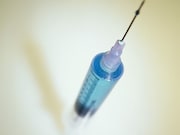Monitoring non-fatal overdose events from EMS data may aid in developing emergency response
MONDAY, Aug. 13, 2018 (HealthDay News) — The rate of naloxone administrations by emergency medical services (EMS) providers increased 75 percent from 2012 to 2016, according to research published in the Aug. 10 issue of the U.S. Centers for Disease Control and Prevention’s Morbidity and Mortality Weekly Report.
Rebecca E. Cash, M.P.H., from the National Registry of Emergency Medical Technicians in Columbus, Ohio, and colleagues used data from the National Emergency Medical Services Information System to determine the rate of EMS naloxone administration events (2012 to 2016). The authors then compared this rate with opioid overdose mortality rates determined from National Vital Statistics System multiple cause-of-death mortality files.
The researchers found that from 2012 to 2016, the rate of EMS naloxone administration events increased 75.1 percent, from 573.6 to 1,004.4 administrations per 100,000 EMS events. This increase mirrored the 79.7 percent increase in opioid overdose mortality from 7.4 (deaths per 100,000 persons) to 13.3. In the age groups of patients who received naloxone from EMS providers, a bimodal age distribution was observed, with modes at ages 25 to 34 years and 45 to 54 years.
“Monitoring non-fatal overdose events using EMS records provides a more complete evaluation of the potential injury burden and a means of benchmarking for communities and EMS agencies to better address the evolving opioid epidemic,” the authors write.
Copyright © 2018 HealthDay. All rights reserved.








